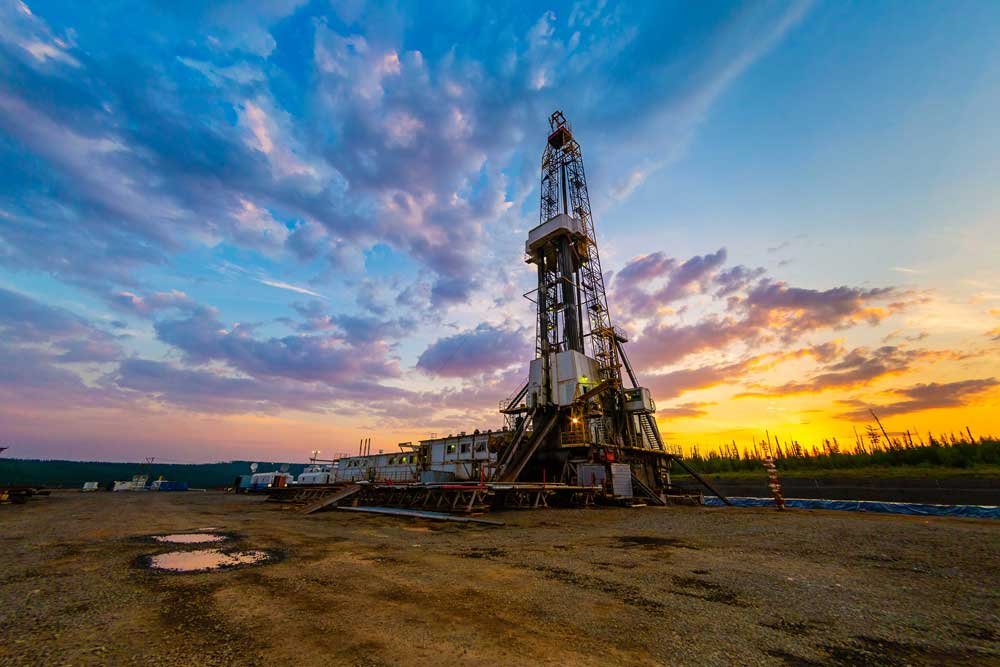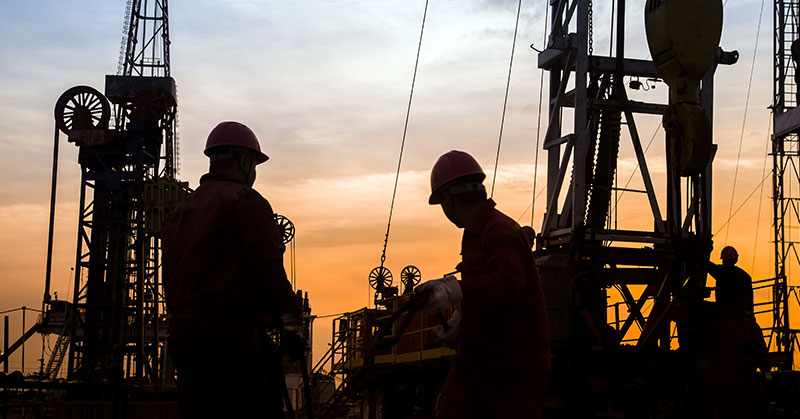
The oil and gas industries have been a booming source of employment for many individuals across Texas and New Mexico. High-paying jobs come with their highs, but they also come with their lows. In this case, the bitter truth is that the oilfield work environment is fraught with danger, and with every passing day, workers are exposed to the risk of sustaining severe injuries. As hazardous as these job sites are, one cannot help but wonder: what are the most common types of accidents and injuries that oil workers face? From heavy machinery incidents to explosions and falls, the possibilities are numerous and frightening. In this blog post, we delve into the common circumstances that lead to oilfield injuries, providing essential insights into the risks workers encounter on the job and the role that employers and equipment manufacturers play in the equation.

1. Oilfield Accidents: Common Types of Injuries
In the oil and gas industry, workers are often subjected to numerous hazards, thereby making oilfield accidents and severe injuries all too common. According to Sand Law North Dakota, in 2016, out of 349 severely injured employees in the oilfield, the rate of severe injuries was 148.9 per 100,000, surpassing industrial building construction at 133.5 per 100,000. These injuries vary in type and severity, including head and brain injuries such as concussions, skull fractures, and facial lacerations. Heavy lifting and the potential for faulty equipment can result in broken bones, while equipment malfunctions can lead to the loss of limbs. Additionally, working in oilfields exposes employees to the risk of burns, soft tissue injuries, and exposure to hazardous chemicals and fumes. It is crucial for oilfield workers to be well-trained and for employers to prioritize safety in order to mitigate the occurrence of these injuries. [1][2]
2. Unsafe Conditions: A Major Hazard for Oilfield Workers
Ensuring a safe working environment is crucial for the wellbeing of oilfield workers. However, several factors contribute to unsafe conditions that can lead to accidents and injuries. Poorly maintained workspaces can cause slip and fall accidents, and cluttered decks or slippery surfaces can be dangerous for workers. Companies have a responsibility to maintain vigilance and prioritize safety to reduce the risk of accidents.
Key takeaways:
– Unsafe conditions, such as cluttered and slippery workspaces, are a major hazard for oilfield workers.
– Companies must ensure a safe working environment to minimize risk and prevent accidents.
– “Highway vehicle crashes are the leading cause of oil and gas extraction worker fatalities.” – Occupational Safety and Health Administration (OSHA)
In conclusion, unsafe conditions in oilfields not only put workers’ lives in danger but also lead to significant financial and emotional burdens on the affected individuals and their families. Creating and maintaining a safe working environment should always be a top priority in the oil and gas industry. [3][4]
3. Flammable Liquids and Gases: A Risk for Oilfield Workers
Flammable liquids and gases are an inherent risk for oilfield workers, posing serious threats to their safety and well-being. These hazards, such as flammable vapors, well gases, and hydrogen sulfide, are released during drilling and extraction activities, increasing the potential for fires and explosions.
– According to the Occupational Safety and Health Administration [OSHA], fire and explosion hazards due to ignition of such volatile substances are a leading danger for those working in the oil and gas industries.
– Proper handling and storage of these flammable materials are critical in preventing devastating accidents and ensuring worker safety.
– Implementing rigorous safety protocols, thorough training, and regular equipment maintenance can minimize the risk of accidents involving flammable liquids and gases in oilfields. [5][6]
4. Heavy Equipment and Poor Maintenance: A Recipe for Disaster
Heavy equipment and poor maintenance in oilfields are a dangerous combination, often resulting in disastrous accidents. With the presence of large machines such as drilling rigs, pumps, and pipelines, proper upkeep is crucial to prevent equipment failure due to wear and tear or manufacturing defects. Additionally, human error, such as inadequate training and fatigue among workers, can contribute to accidents involving poorly maintained equipment. For a safe working environment, it is essential that:
– Companies implement effective training programs to educate workers on proper machine operation
– Maintenance and inspection activities are regularly conducted to identify and repair faulty equipment.
– Effective communication systems are in place to facilitate prompt reporting of equipment issues, preventing further damage or accidents from occurring.
By doing so, oilfield operators can minimize the risks associated with heavy equipment and poor maintenance, thus ensuring the safety of their workers and the overall integrity of their operation. [7][8]

5. Slips, Trips, and Falls: Common Causes of Oilfield Injuries
Slips, trips, and falls are among the leading causes of oilfield injuries, often resulting from hazardous work conditions, inadequate training, and human error. These seemingly simple accidents can have severe consequences, including head injuries, fractures, dislocations, and even fatalities. Consider the following facts about slips, trips, and falls in the oilfield sector:
– They accounted for 29% of non-fatal accidents in the oil and gas industry (Sand Law North Dakota).
– Adequate training and proper footwear are crucial in preventing these accidents.
– Poorly lit workspaces or uneven terrain make oilfields even more prone to slips, trips, and falls.
It’s essential for employers to provide comprehensive training programs and maintain high safety standards to reduce the risk of oilfield injuries. Employees must also follow safety protocols and report any violations to ensure a safe working environment. [9][10]
6. Exposure to Hazardous Chemicals and Fumes
The oil and gas industry exposes workers to various hazardous chemicals and fumes, posing significant health risks. Some of the dangers associated with working in oilfields are due to the release of harmful substances like hydrogen sulfide, flammable gases, and well vapors. According to the Occupational Safety and Health Administration (OSHA), the oil and gas extraction and support industries have on-the-job fatality rates seven times higher than the rate for all U.S. industries. Protecting workers from harmful exposure is crucial in ensuring their safety and reducing occupational hazards. Employers must ensure proper safety protocols, training, and the provision of appropriate personal protective equipment to minimize exposure and protect the health of their workers. [11][12]
7. Well Blowouts: A Dangerous Risk for Oilfield Workers
Well blowouts pose a significant risk to oilfield workers, as they can result in uncontrolled releases of oil, gas, and debris from the well. When the pressure control system fails, it creates the perfect environment for a dangerous explosion. A single spark coming into contact with the escaping oil and gas can be enough to cause an explosion during a blowout, making them truly hazardous.
– According to a report by Undefeated Oilfield Injury Lawyer, well blowouts are one of the common causes of oilfield explosions, which can lead to severe injuries or even death.
– Regular maintenance, safety precautions, and proper training for workers are crucial in preventing blowouts and protecting workers in the oilfields. [13][14]
8. Electrocution: A Hidden Danger for Oilfield Workers
Electrocution is a hidden danger for oilfield workers that often goes unnoticed. It can cause severe injuries like cardiac arrest, muscle and nerve damage, and even death. Not only electricians but also other oil field workers are at risk of electrocution due to factors such as improper maintenance of machinery and equipment, and exposure to chemicals conducting electricity. To prevent this hazard, it is crucial for companies and employers to enforce safety regulations and ensure regular maintenance checks on exposed electrical wires and machinery. Moreover, providing proper training to workers on handling and operating equipment can also significantly reduce the risk of electrocution accidents in oilfields. Remember, vigilance and adherence to safety standards are crucial to protect the lives of oilfield workers from hidden dangers like electrocution. [15][16]
9. Broken Bones: A Common Type of Oilfield Injury
Broken bones are a prevalent type of oilfield injury, often resulting from falls, defective equipment, and accidents involving heavy machinery. These injuries can be severely debilitating and require extensive medical treatment. Here are some key points to consider:
– Oilfield workers can suffer broken bone injuries from various accidents, such as falls caused by loss of footing or from being struck by defective equipment.
– Fractures should ideally heal on their own once properly set, but serious breaks may require surgical intervention, such as the installation of plates or pins to hold the bones together.
– Improperly fused bones can lead to long-term consequences, including the loss of use of the affected limb.
– Companies must prioritize worker training and safety measures to minimize the risk of broken bone injuries in the oilfield industry.
In conclusion, broken bones are a common oilfield injury, and proper safety protocols must be in place to prevent such incidents. Employers and workers alike must maintain vigilance to ensure a secure work environment. [17][18]

10. Burns and Chemical Injuries: A Painful Consequence of Working in Oilfields
Oilfield workers face numerous hazards on a daily basis, but one of the most painful and dangerous consequences of working in the oil and gas industry are burns and chemical injuries. These injuries can result from explosions, fires, or exposure to toxic chemicals on oil rigs and drilling sites.
– In the United States, more than 22% of crude oil production takes place, resulting in a high number of workers exposed to potential burn and chemical injury risks.
– According to Herrman & Herrman, common injuries suffered in oilfields include burns from fire, explosions, and electrocutions.
– The flammable nature of oil and gas contributes significantly to the risk of fires and explosions, with OSHA revealing that such accidents usually occur due to sparks or heat from various sources including cigarettes, overheated equipment, and power tools.
The devastating effects of these injuries not only impact workers physically, but also lead to emotional trauma and financial difficulties. Preventing such injuries requires proper safety measures, equipment maintenance, and adherence to industry regulations. [19][20]